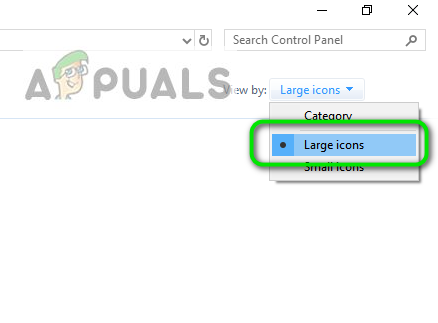Fix: Power Surge on USB Port
The “Power Surge on USB Port” notification indicates that a connected USB device is drawing more power than the port can supply, potentially disabling it. This error typically arises from a faulty USB device or damaged cable that overloads the port. It can also occur due to outdated USB controller drivers, malfunctioning hubs, or non-compliant peripherals.

The warning may appear either when a device is first connected or when an already plugged-in device stops working.
In this article, we will discuss different solutions to solve this error.
1. Run Hardware Troubleshooter
Starting with the hardware troubleshooter can quickly identify issues in your USB ports, such as faults or compatibility problems causing the power surge error. This Windows utility scans your hardware, detects problems, and suggests fixes to resolve them. Running the hardware troubleshooter might help resolve the issue.
- Press Windows + R, type “control” in the dialog box, and press Enter.
- Click View By in the top-right corner and select Large Icons.

- Select Troubleshooting from the Control Panel.

- Choose “View all” on the left to access troubleshooting packs.

- Select “Hardware and Devices”.

- Click Next to start the process.
- Wait for Windows to find and fix hardware issues.
- If prompted, save your work and restart the PC by clicking “Apply this Fix”.
2. Reinstall USB Drivers
Updating your USB drivers can fix communication issues between the hardware and software. Reinstalling these drivers makes Windows set up the correct settings for USB power again, which can solve conflicts or outdated settings causing the power surge alert.
- Press Windows + R, type “devmgmt.msc” in the dialog box, and press Enter.
- In Device Manager, expand “Universal Serial Bus controllers”, right-click each USB controller, and select “Uninstall device”. If your mouse stops working, use the keyboard to press Alt and select Action -> Scan for Hardware Changes. Otherwise, restart your PC to reinstall the drivers.

- Right-click any empty space and select “Scan for hardware changes” to reinstall USB drivers automatically.

3. Check Individual Hardware
Sometimes, the problem is with a single USB device, not the port. By unplugging each device one at a time, you can find the device causing the power surge. Identifying faulty hardware stops the port from overloading and solves the error without affecting other devices.
To diagnose this, reinstall the drivers as explained in Solution 2. Once you have reinstalled the necessary drivers, plug in each device one by one to identify which device causes the error.

If you identify a problematic device, try plugging it into the back ports of your PC. The back ports typically provide more stable power to the device. If this doesn’t work, try connecting it to another computer. If the behavior remains the same, there might be an issue with the hardware itself.
Consider checking the hardware, or if it is under warranty, claim it at your local store.
4. Check Power Supply and USB Connections
Ensure a stable power supply and secure USB connections to prevent power surges on USB ports. Unstable power or loose connections can cause spikes and trigger the error. By confirming steady power and proper connections, you reduce the risk of overloading the ports.
For fully built computers, make sure you have at least 600 watts of power supply. If you have a lower supply, it may be time to upgrade.

Additionally, check the USB connections to ensure they are properly soldered within the PC. Improper connections can cause errors. After thorough checking, if you cannot determine the cause, examine the devices again. Also, the port you are using might be damaged.




